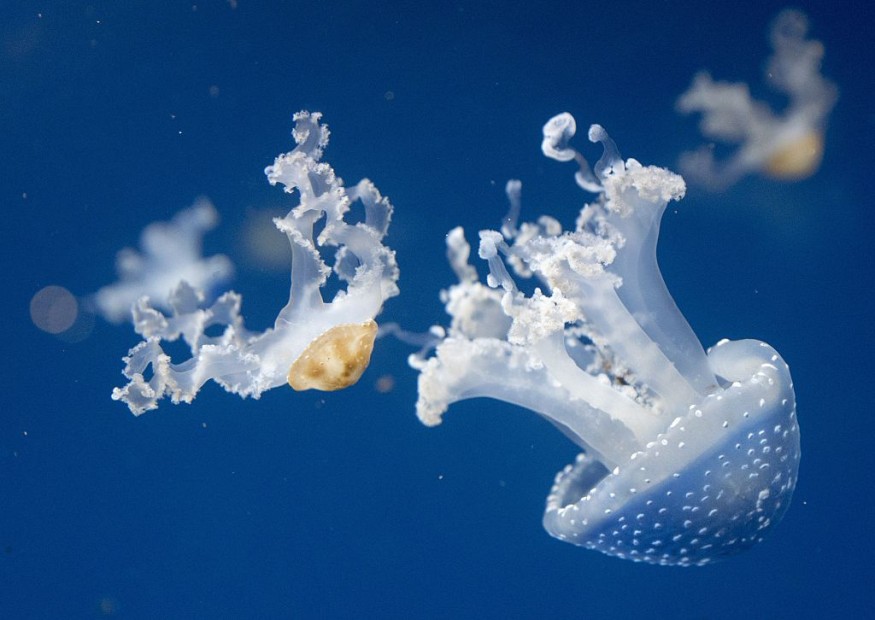
A stunning footage of a new species of deep-sea jellyfish was captured at Monterey Bay Aquarium. The "unusually large" deep-sea crown jelly was observed to have thorny projections around the margin of its bell which made it distinct from all ten previously described species.
Researchers from Monterey Bay Aquarium Research Institute (MBARI) detailed the new discovery in Animals, describing the new species as distinctive deep-sea red medusa with coiled tentacles in the family Atollidae, with ten presently accepted species in the genus Atolla.
To honor the first volunteer at Monterey Bay Aquarium and MBARI's education and conservation partner, Jeff Reynolds, the researchers named the species Atolla reynoldsi.
"We named this stunning new species in honor of Jeff Reynolds in recognition of the 4.3 million hours of service that he and other volunteers have contributed to the Monterey Bay Aquarium over the past 38 years," MBARI Senior Education and Research Specialist and lead author George Matsumoto said in PetaPixel. "They have graciously given their time to educate the public about the wonders of the ocean."
The lead author notes that aquarium volunteers have been instrumental in making the public aware of the fragility of the ocean and inspire people to care more about the health of the ocean.
About the "Crown Jelly"
The recently identified species in the family Atolla is distinguished by a deep groove running through their bell, found in the ocean's midnight zone in deep water around the world. Like many other deep-sea jellies, Atolla jellyfish have a deep red hue, but actually appears completely black to predators, according to Twilight Zone.
"To date, scientists recognize 10 species in the genus. Atolla chuni, A. gigantea, and A. vanhoeffeni are the most recognizable-they have unique features that make them relatively easy to identify," MBARI says. "But others, even the common and widespread A. wyvillei, can be rather difficult to identify. Some characteristics thought to be species-specific have turned out to be less than helpful in separating out the species."
15 years ago, a large jelly that looked like Atolla was also spotted by MBARI researchers "but lacked the telltale trailing tentacle."
Also read : Woman Gets Hole in Her Belly After Gotten Infected with Very Serious "Flesh-Eating Disease"
One of the Largest in the Genus
At 13 centimeters (5.1 inches) in diameter, the newly discovered species was considered one of the largest in the genus, according to MBARI researchers. While the A. reynoldsi lacked that signature trailing tentacle, it is often observed with coiled tentacles which varies considerably from one individual to the next.
Sightings of A. reynoldsi are generally rare, with only 10 seen between April 2006 and June 2021. So far, it is only known to live in Monterey Bay at depths of 1,013 to 3,189 meters (3,323 to 10,463 feet).
The study provides potential starting points for a new key to the genus and adds to the increasing number of new deep-sea species described today. As undersea technology advances, genetic sequencing is becoming more available, paving the way to document the diversity of life deep beneath the waters before it's gone forever.
Related article : 10 of the Weirdest, Most Bizarre Creatures Seen in 2021
© 2025 NatureWorldNews.com All rights reserved. Do not reproduce without permission.





